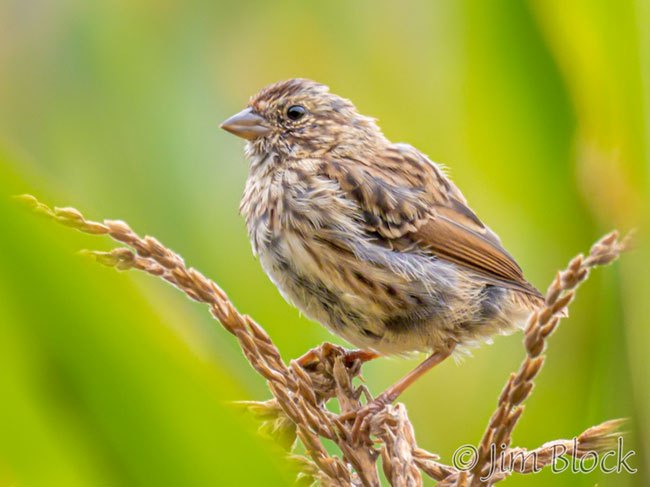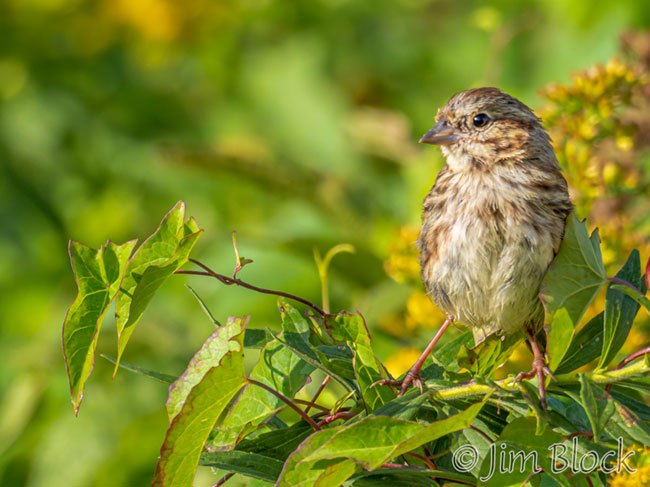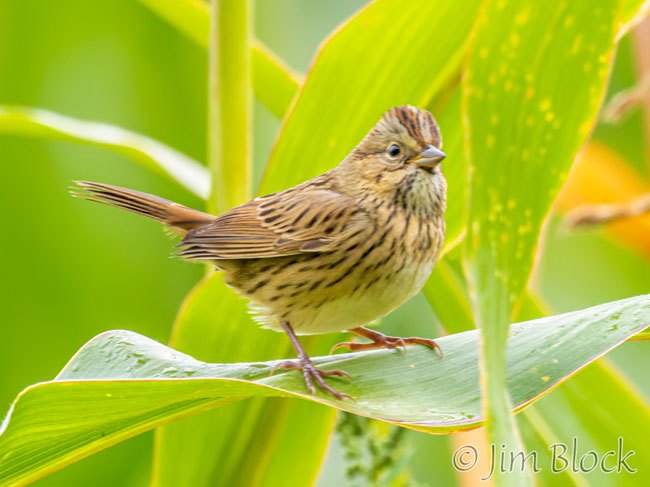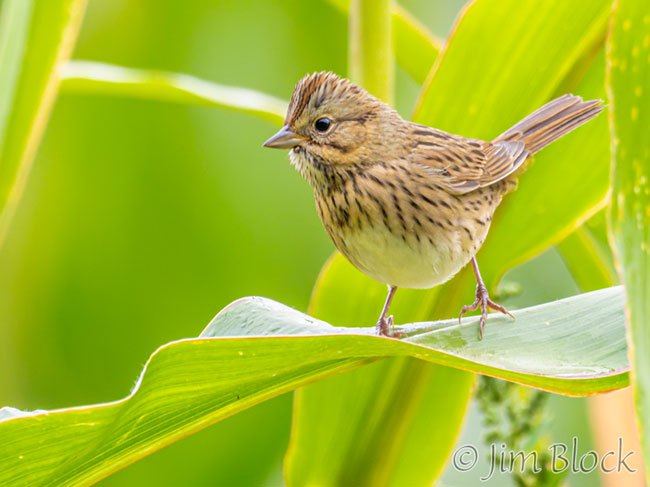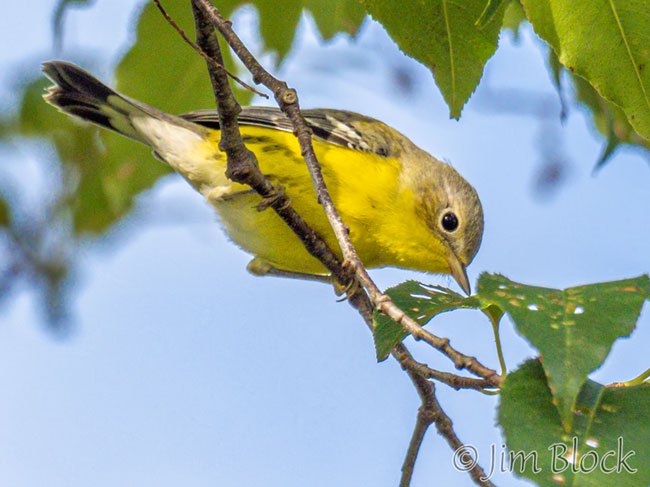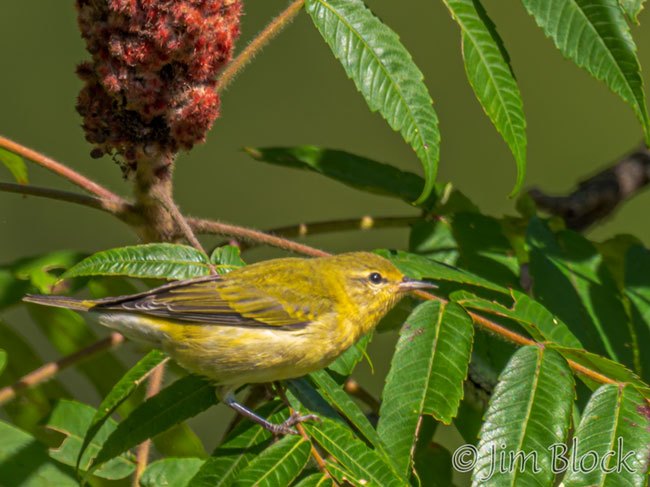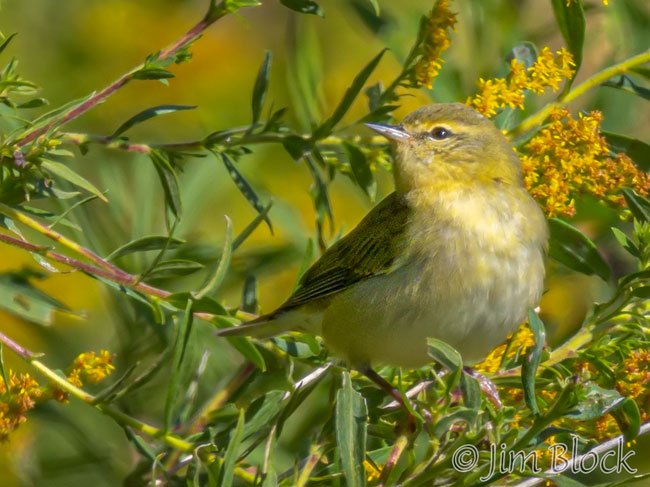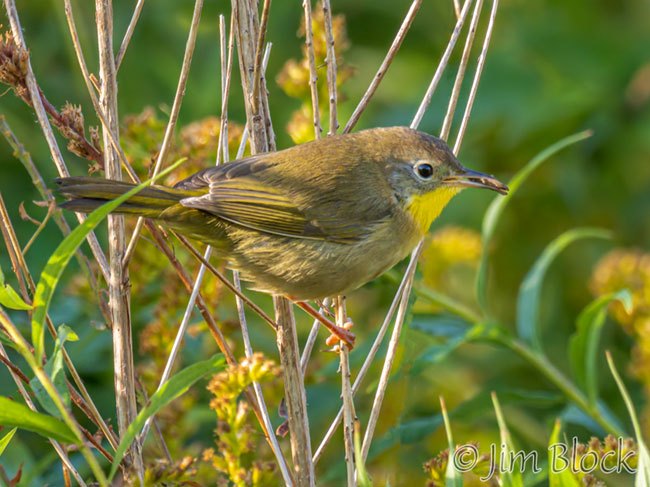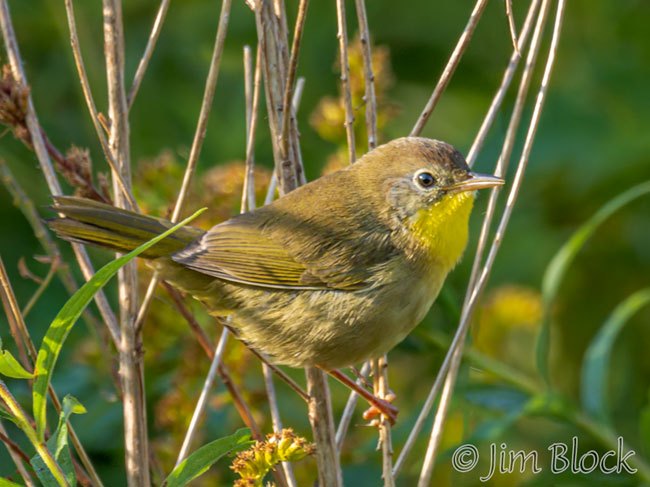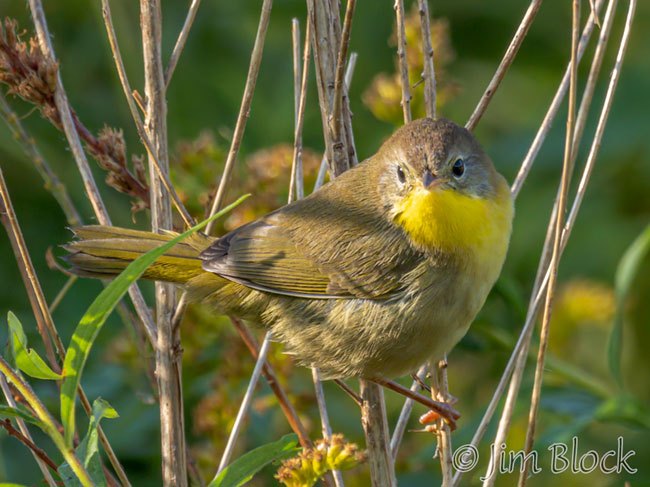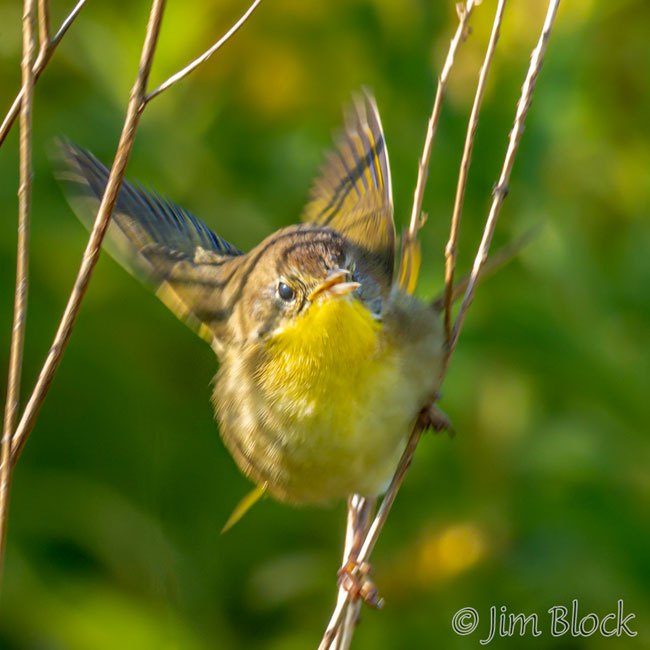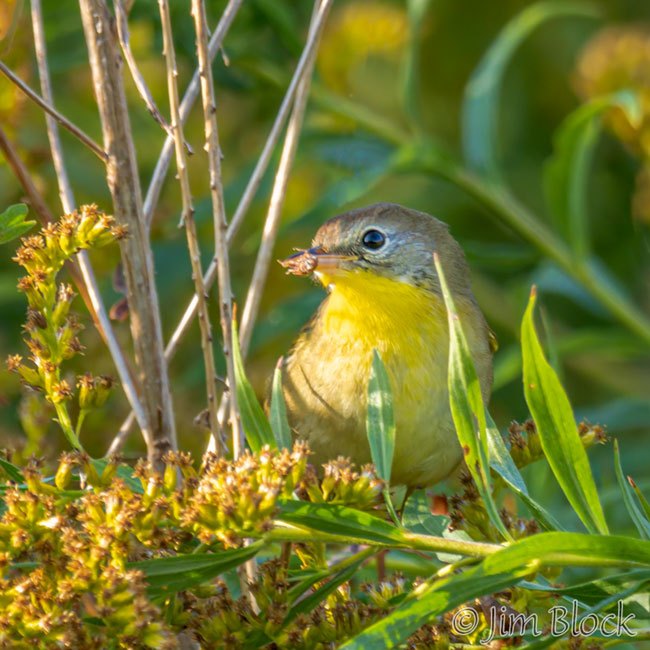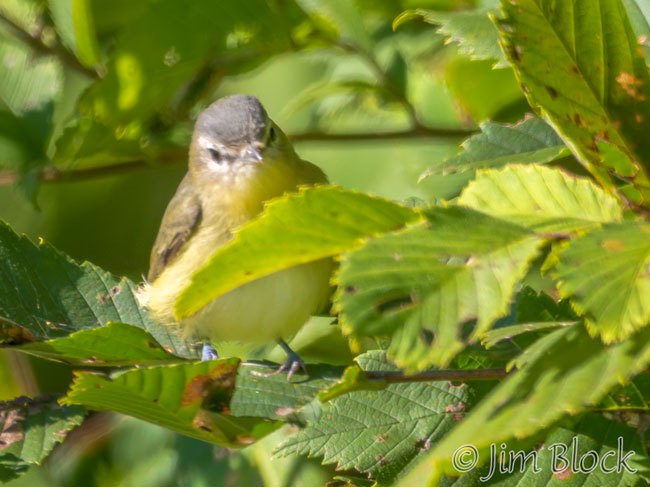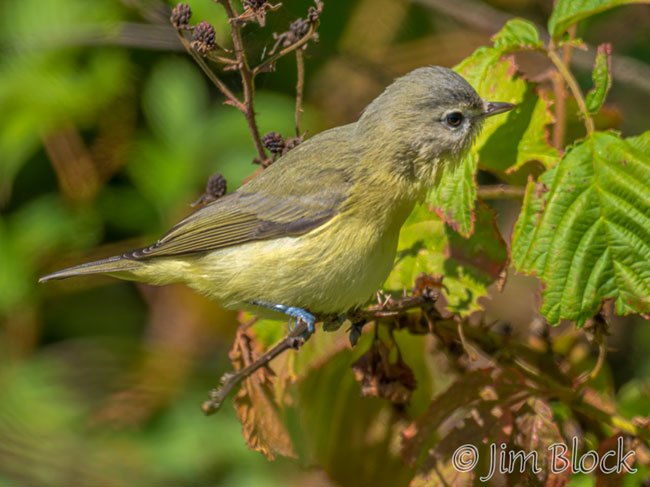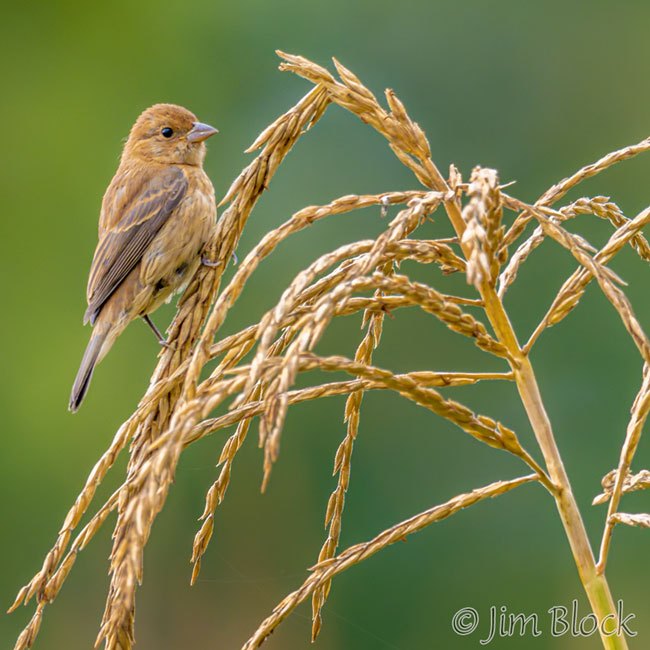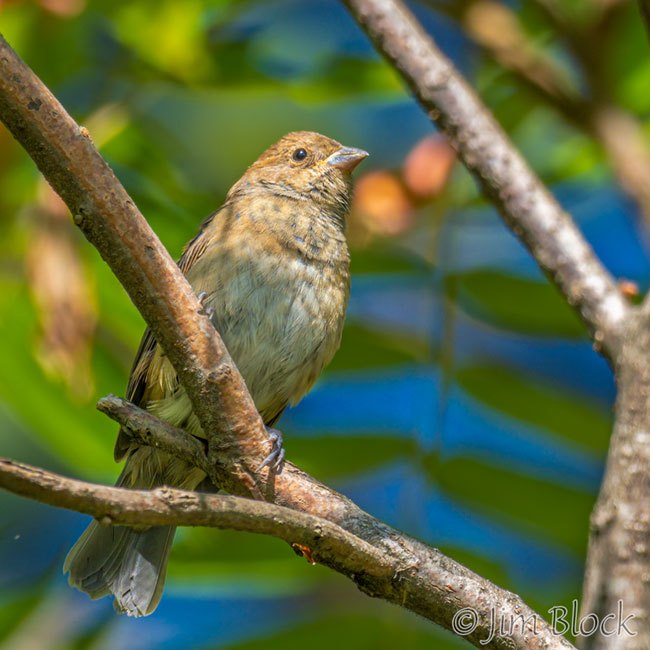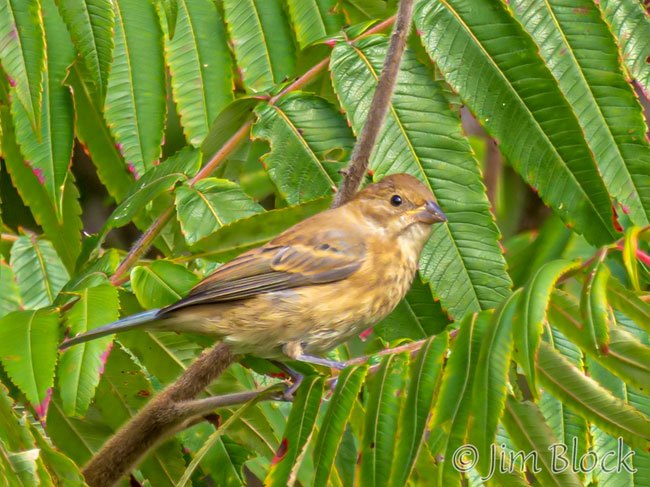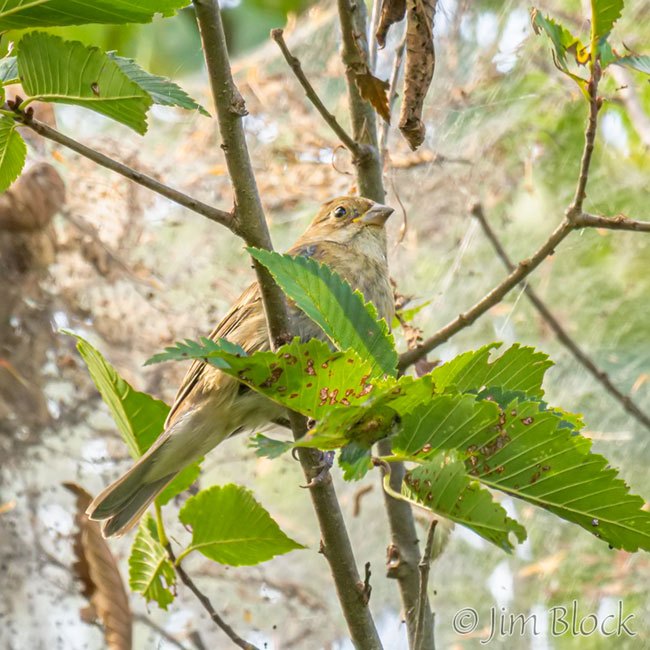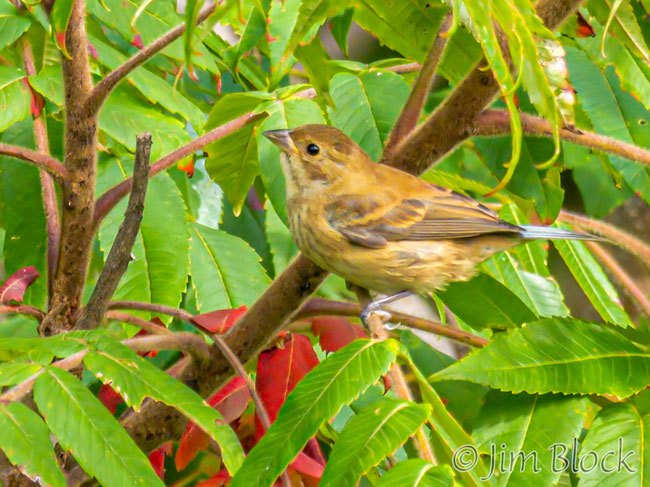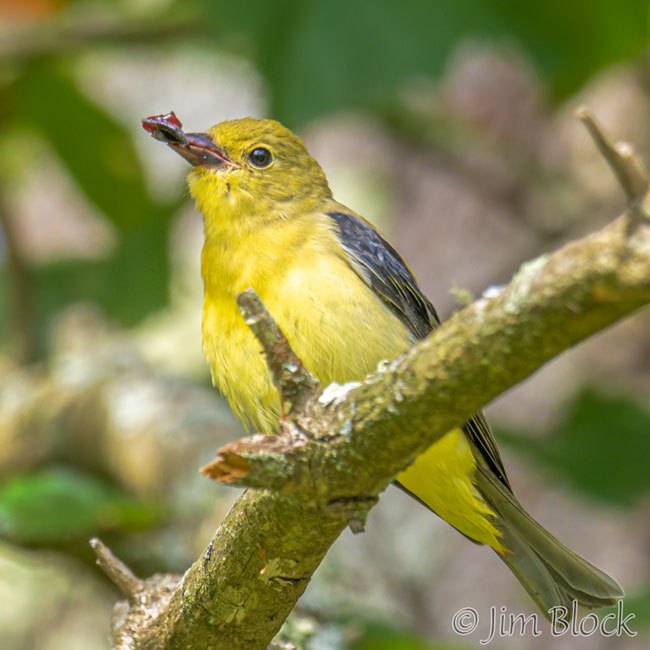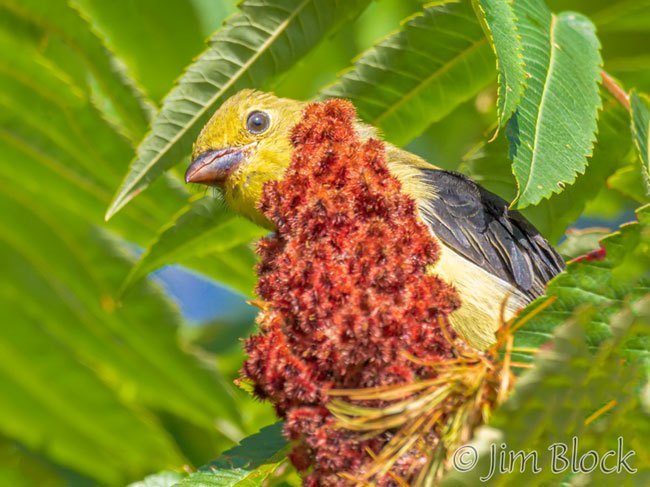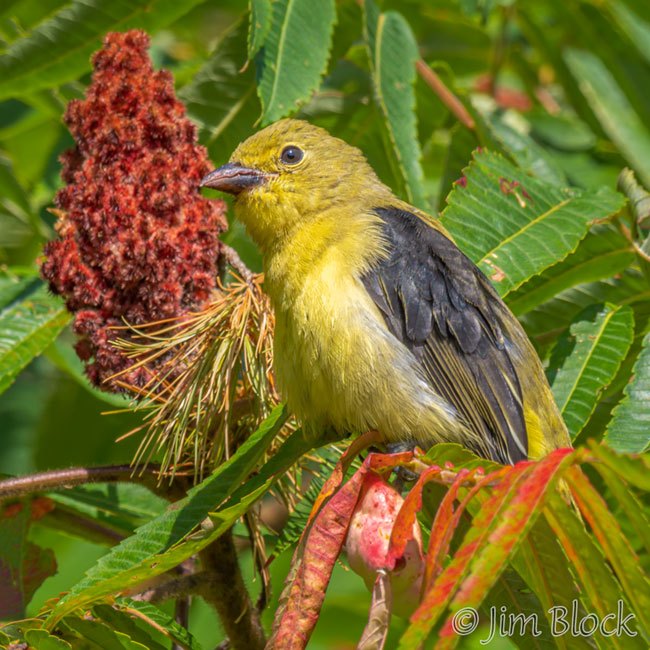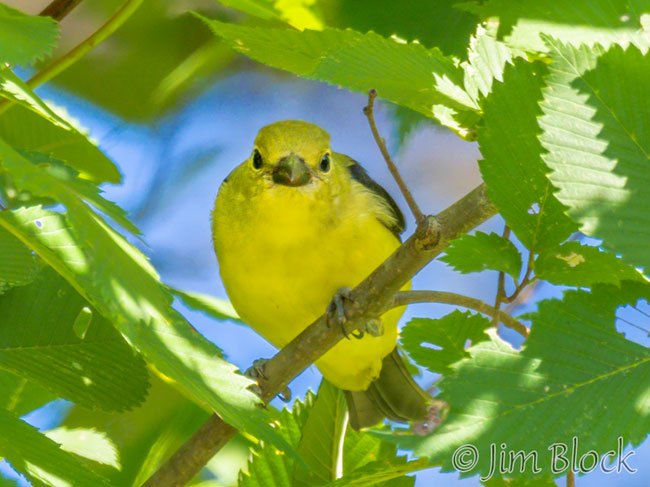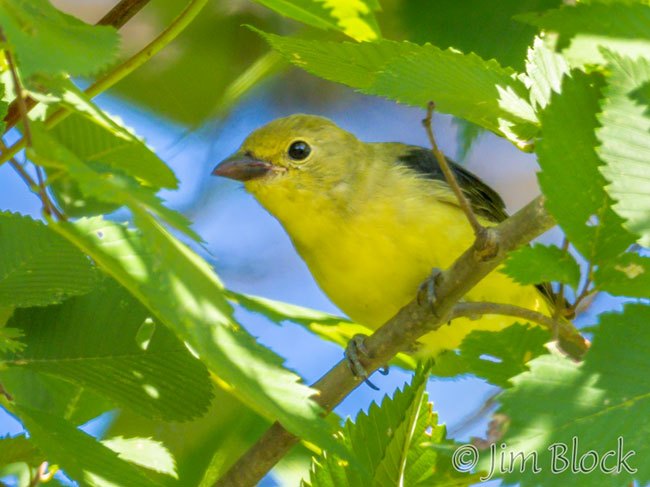Campbell Flat in Norwich, VT was my bird photography spot this past weekend. Bordering the Ompompanoosuc River and near the Connecticut River, it seems to be a magnet for birds. It was quiet at times, and then a short flurry of activity would happen. Sparrows and brown Indigo Buntings worked the corn field. A few warblers inhabited the woods.
Fall warblers and sparrows can be an identification challenge. I have been using iNaturalist for ID help, and in a number of cases I have received helpful verification of the ID that the App and I suggested. But many sparrow photos have languished without a second opinion.
It is a crazy way to begin a bird blog, but here are some of the sparrows that caused me some ID concerns. If you wish to offer opinions or corrections, I certainly welcome them. I’ll update this blog as appropriate.
Although the bird is dead center, I think the lines of the corn foliage offer a nice counterpoint to this sparrow. I wanted to call it a Lincoln’s Sparrow, but it is a more-common Song Sparrow.
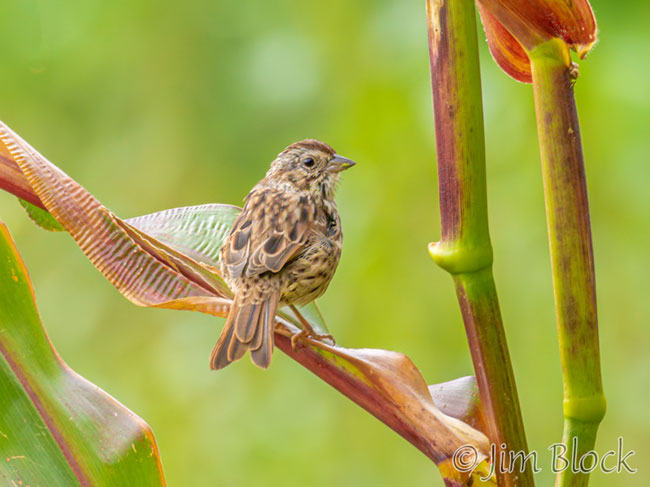
The bird below is also a Song Sparrow.
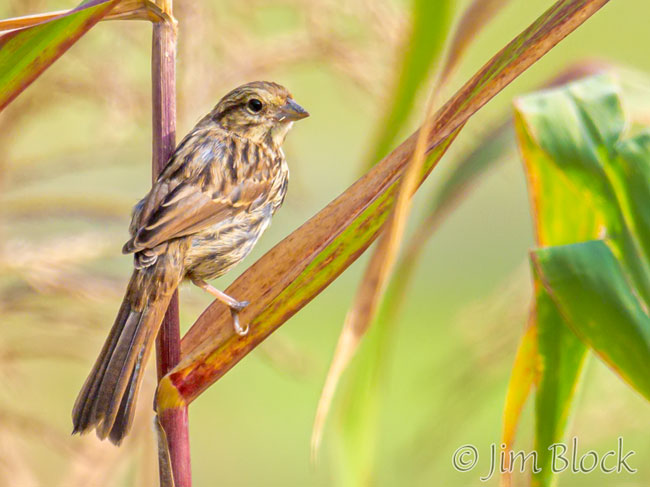
The following two photo are Song Sparrows that somewhat resemble Lincoln’s Sparrows.
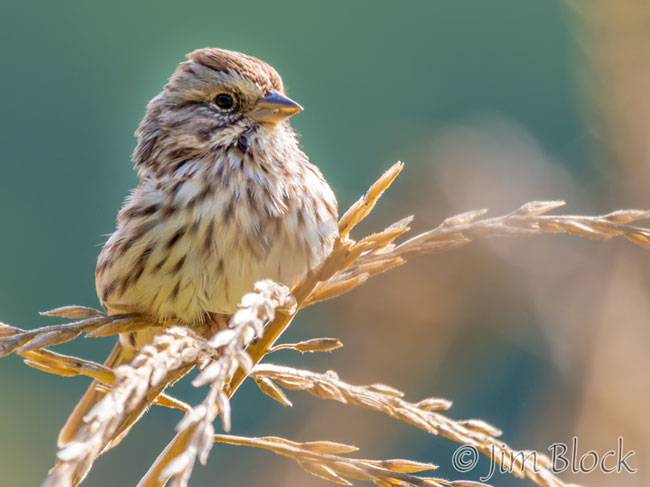
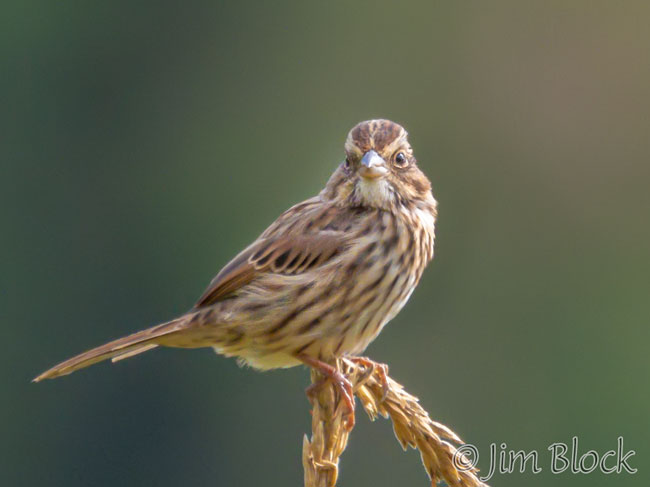
Below are two sparrow photos that look similar to the above. I originally thought they were Savannah Sparrows but they are actually juvenile Song Sparrows. So many Songs….
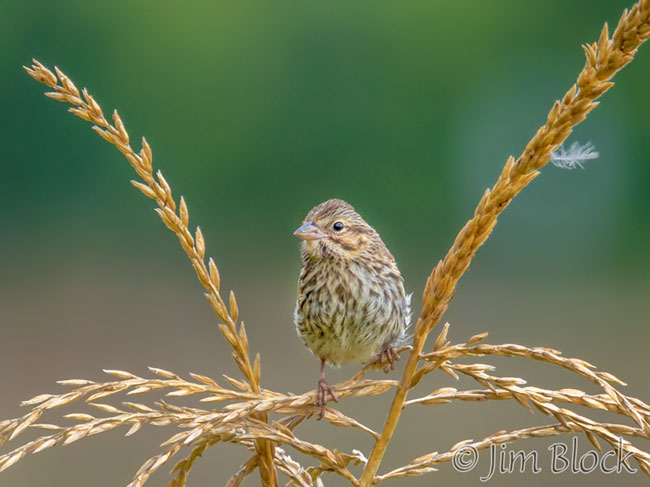
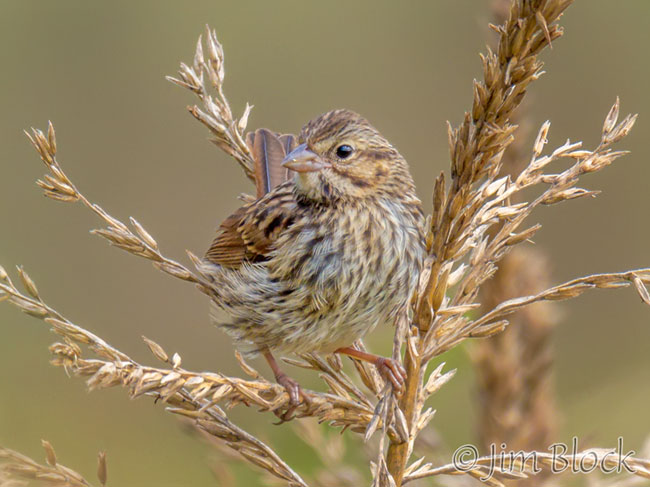
Here is another sparrow — this one a Field Sparrow.
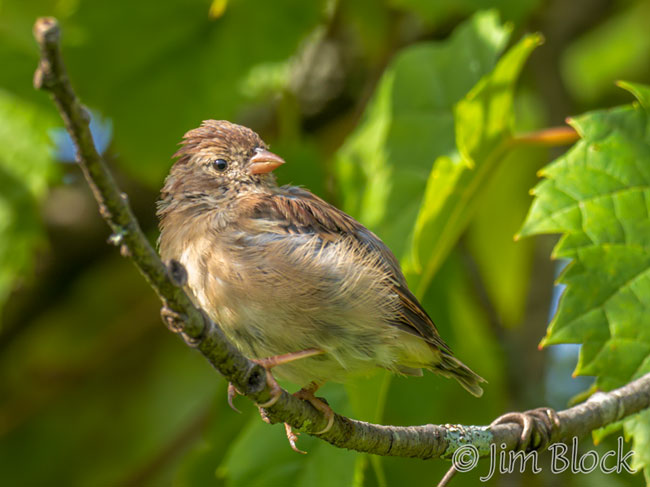
Staying with sparrows, here are five photos of Song Sparrows.
Finally I can show you a beautiful and somewhat rare Lincoln’s Sparrow, dancing on a corn leaf.
I am a lot more confident about the warblers I photographed. Here are four photos of Magnolia Warblers.
Tennessee Warblers are rare in Norwich during the summer. They breed in coniferous bogs in the Northeast Kingdom and farther north. But during spring and fall migration they can be seen in the Upper Valley.
The third warbler species I found was the Common Yellowthroat.
Moving on to the vireos, I got a few photos of the beautiful Red-eyed Vireo.
A similar, but much rarer vireo species in the Upper Valley, is the Philadelphia Vireo.
Indigo Buntings worked the corn, the edges of the woods, and one even posed in front of some caterpillar webs. In the summer the males are bright blue/indigo, but in the fall both genders are brownish.
A female Downy Woodpecker worked the trees near the river. I got a few shots of the accompanying male, but they are not good enough to show.

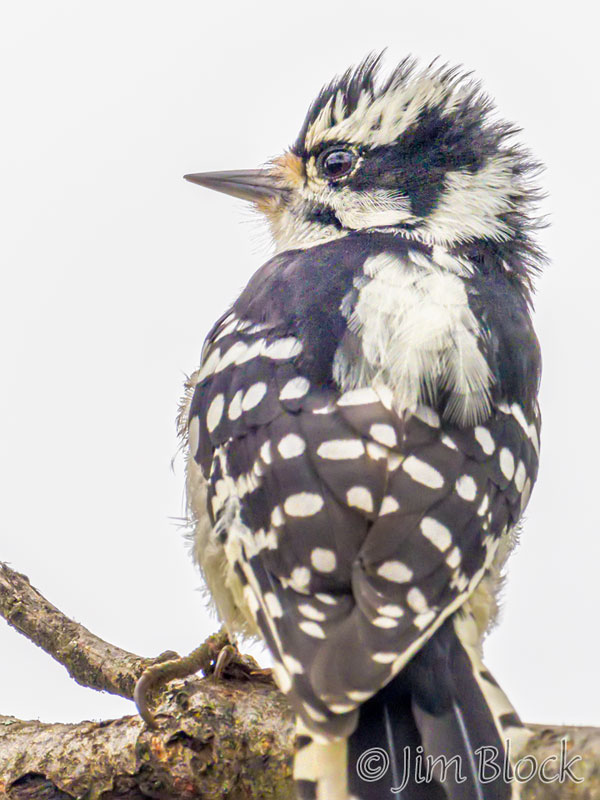
It is just gray, but I think the Gray Catbird is a handsome species. Found regularly spring to fall in the Upper Valley, normally skulking in the brush.
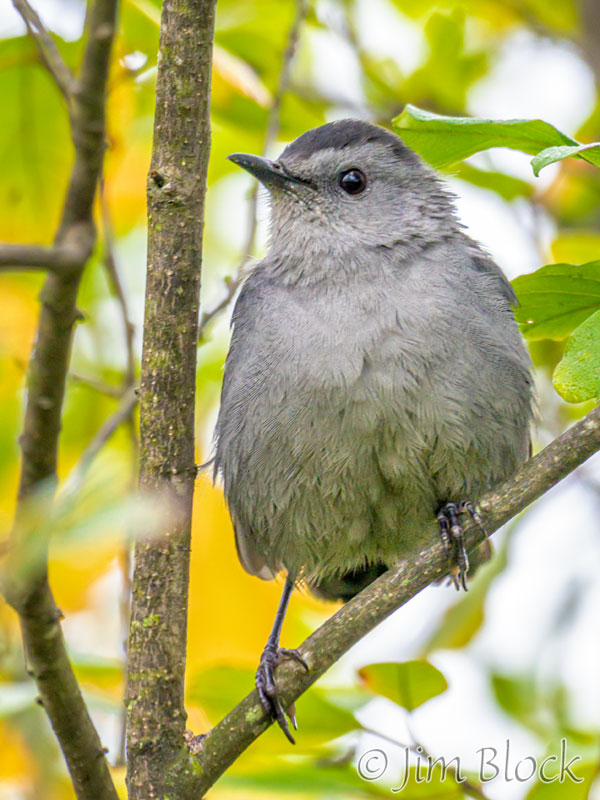
I found an Eastern Phoebe in two locations. You can see how the light can change the color of the bird. The second one was strongly backlit and the blue sky permeated the color.
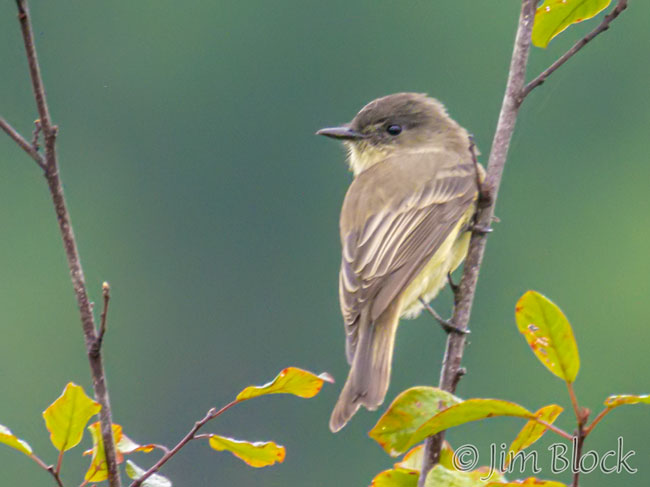
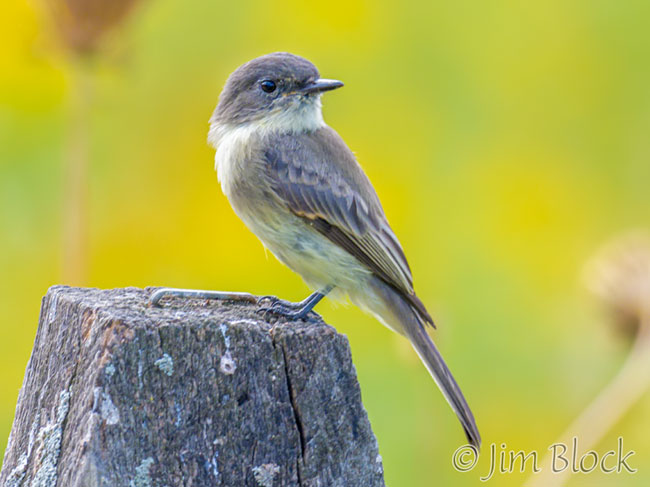
Overhead was a Red-tailed Hawk…
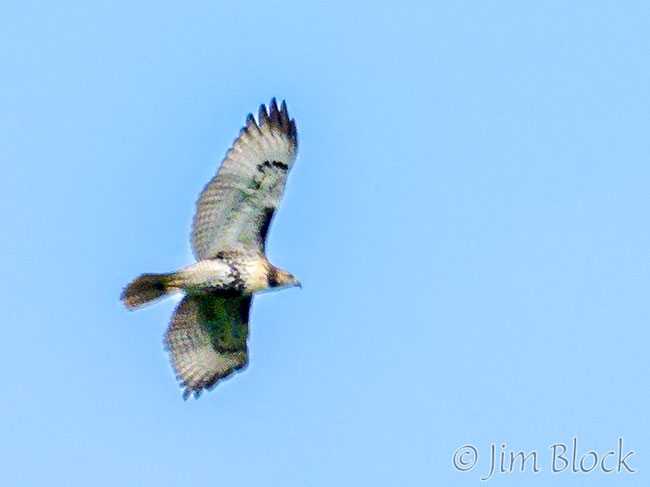
… and a Turkey Vulture.

Perhaps the bird I photographed most was a Scarlet Tanager, now yellow in fall whether male or female. It posed, peaked around a sumac, and hid in the woods. At one point it plucked a red something with its beak.
If you would like to get an email notification whenever I publish a new blog, you can subscribe at the top right of this page.
If you would like to see my recent blogs, you can CLICK HERE.

